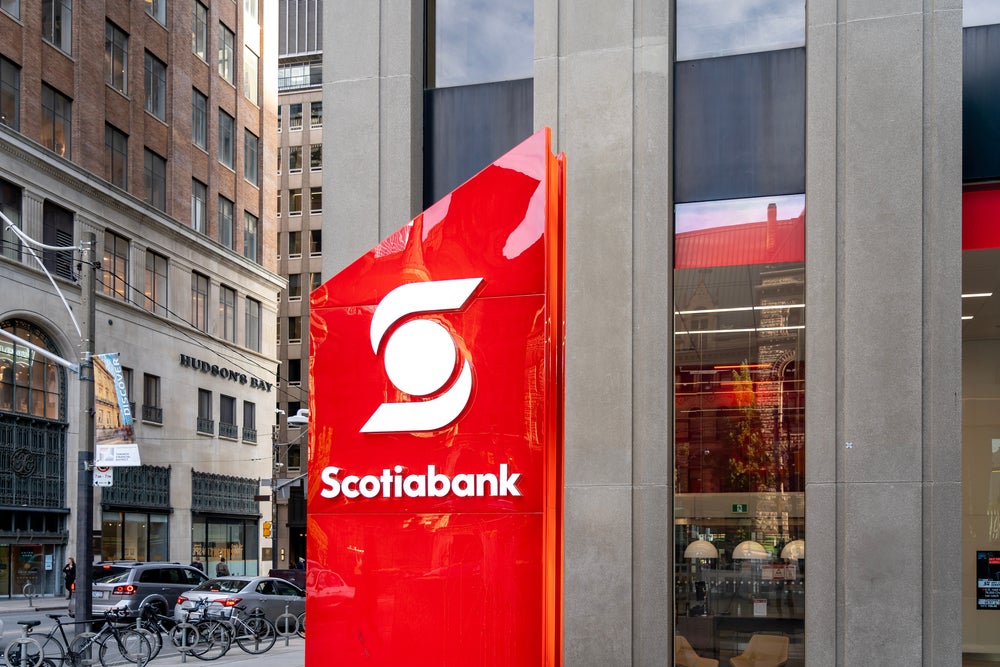Scotiabank’s successful youth
campaigns in the Caribbean are now being rolled out further across
Central and Latin America, with the Scotiabank Be programme at the
forefront of the Canadian bank’s plans. Dan Jones spoke to key figures in
Scotiabank’s international retail banking division about the
initiatives.
With over 2,000 branches in 50 countries
outside of Canada, Scotiabank, Canada’s third-largest bank by
assets, has a more extensive international retail banking network
than its peers – and is continuing to expand, with its June 2008
acquisition of Peru’s Banco del Trabajo making it that country’s
leading consumer finance lender. 
The international network spans regions as
diverse as Latin America, Central America and Asia, and it is a
diversity which extends to a granular level: the Caribbean alone is
comprised of some 7,000 islands and 15 countries in which
Scotiabank has a presence.
“It’s very hard to have a general approach
across our international network with so many customers across so
many networks. We’re in so many countries that the challenges vary
[but] we want to be the client’s primary bank which brings together
all the facets of their banking relationship,” Jeremy Pallant,
vice-president of product and sales support within the
international banking division, told RBI.
“In Latin America especially, you’ll often see
clients opt for different banks for different financing
requirements – they’ll go to bank A for a mortgage, bank B for a
car loan, and bank C is their transactional bank where they do
their basic banking.”
Securing this relationship by engaging
customers at an early stage of the consumer life cycle – say, at
university – is a tried-and-tested method, and it is a strategy
that Scotiabank has employed particularly adeptly across the
Caribbean and Central American region.
How well do you really know your competitors?
Access the most comprehensive Company Profiles on the market, powered by GlobalData. Save hours of research. Gain competitive edge.

Thank you!
Your download email will arrive shortly
Not ready to buy yet? Download a free sample
We are confident about the unique quality of our Company Profiles. However, we want you to make the most beneficial decision for your business, so we offer a free sample that you can download by submitting the below form
By GlobalDataOne key pillar of the bank’s youth strategy is
Scotiabank Be, a sub-brand piloted in Trinidad and Tobago last year
aimed at the 18- to 30-year-old market. The initiative has been
conceived as providing “a forum for young adults to advance their
ambitions, support their peers and take positive steps towards
personal success and financial security”, and encompasses tailored
programmes, services and, increasingly, products.
“We have piloted products such as a Be-branded
student loan in Belize and basic product sets in Trinidad and
Tobago encompassing things such as savings accounts,” said Ruth
Burshtein, director of sponsorships and marketing within
Scotiabank’s international banking division. “We are also working
on other products for the young adult segments – prepaid cards and
things like that.”
Scotiabank Be is supported by a considerable
internet presence, which has allowed the bank to bolster the brand
with a number of innovative campaigns. The Scotiabank Be Music
initiative, for example, saw the bank set up a social network
centred around upcoming and established local musicians.
“We’ve invited local musicians to post their
music on a shared website and invite the public to respond and rate
the musicians and say what they liked,” explained Burshtein.
The bank’s wider online presence is currently
being bolstered around the region, according to Heather Lloyd,
senior-vice president of international banking systems at
Scotiabank. Lloyd told RBI that the bank had launched a
brand new internet banking platform across the Caribbean over the
past 12 months, but said that Scotiabank’s desire to reach younger
customers has also led it to look at positioning bank outlets in
shopping malls and other high density areas.
The successful pilot of Scotiabank Be in
Trinidad and Tobago, which has also been linked with other
Scotiabank youth campaigns such as the Change Maker Challenge,
which offered cash prizes in return for students designing their
own Scotiabank Be marketing campaigns, means the programme is
gradually being extended across other markets.
“The idea is to roll this out everywhere and
have it be a living breathing brand for young adults,” Burshtein
affirmed.
The programme is now being opened up to the
rest of the Caribbean as well as areas such as Costa Rica and
Panama in Latin America.
Such countries also have their own
youth-focused programmes. In Panama, for example, Scotiabank has
launched “a specified approach for our youth/young adult population
which involves understanding the employment opportunities of
certain graduate programmes […] we think that there are certain
subsections of the youth market that are resilient even in this
cycle and that’s where we’re looking right now,” said Pallant.
In Peru, meanwhile, where Scotiabank is the
third-largest bank in terms of assets, the bank runs regular
competitions offering rebates and money off the payment of
education tuition fees and other related expenses.
But with its strong sporting heritage, it is
again the Caribbean that is the focal point of Scotiabank’s other
main youth campaign in the region: its sponsorship of the region’s
‘national’ game, cricket. Scotiabank has been the official sponsor
of the West Indian cricket board for the past 11 years, and has
also been the sponsor of ‘Kiddy Cricket’ for almost a decade. The
initiative extends beyond a simple brand exercise; along with
regular competitions the bank not only provides sporting equipment
to schools but also educational material.
Burshtein said: “We created an educational
curriculum binder to supplement some of the materials the local
grade schools are using in the 15 Caribbean countries in which
we’re present – not just for athletics but for subjects like
English, maths and science too – so they can enhance their teaching
materials using the cricket theme.
She concluded: “We’ve seen some really good
ratings in our research about our involvement in the cricket. They
feel the bank is contributing to the community to a beloved and
heritage sport, it seems to go a long way to building goodwill for
the bank.”







